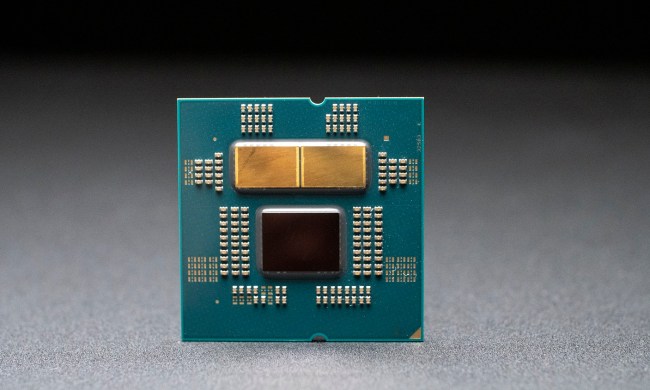
Folks looking to put more oomph in their desktop systems have a brand new option from chipmaker AMD: the Phenom II X6 processor that boasts six independent processor cores, and features Turbo Core technology that can crank up three of those cores to even higher clock speed. AMD is pitching the chip to both gamers and digital content creators—especially folks who worth with 3D modeling software that can leverage all six cores—coupled of course with its ATI Radeon HD 500 series graphics card for an end-to-end 3D experience.
“With AMD Phenom II X6 processors, discerning customers can build an incredible, immersive entertainment system and content creation powerhouse,” said AMD client platform marketing director Bob Grim, in a statement. “AMD is answering the call for elite desktop PC performance and features at an affordable price.”
The AMD Phenom II X6 is built on AMD’s 45nm processor, which is considered a little bulky compared to the 32nm processes employed by other chipmakers. But AMD is hoping to make up for that in performance and pricing: the chip features 6 MB of joint L3 cache shared between the cores—they also have their own isolated 512K L2 caches, meaning a total of 9 MB of data can be stored on the chip itself without running out to main memory…although an individual core might have to look for data in as many as seven places. The Phenom II X6 also leverages technology from AMD’s 12-core and 6-core server chips, with native DDR3-1600 dual channel memory support and a HyperTransport 3.1 connection to the chipset that should improve processor throughput considerably.
The Phenom II X6 should compete in the marketplace alongside rival Intel’s high-end Core i7 processors—and clock speeds are right in line, with the top-end Phenom II X6 part running at 3.2 GHz, barring core-specific overclocking provided by AMD’s Turbo Core technology. Although the Intel Core i7 chip has the performance advantage, AMD will be beating it on price: AMD is offering the parts to manufacturers in the $300 price range. The company is also providing enthusiasts the tools to overclock and tweak the processors on their own rigs: reports have the high-end “Black Edition” Phenom II X6 chips running around 4 GHz on properly-cooled well-designed boards, which might give AMD an edge amongst folks who want to jack their gaming rigs without spending enormous amounts of money.
The downside of a six-core chip, however, is that precious few applications are well-designed to run on multicore processors, let alone six-core chips. While there are a number of exceptions in video editing, 3D rendering, and even gaming, most everyday applications simply don’t leverage the capability, meaning most of the time, these multicore powerhouses toodle along on just a portion of their true capabilities.
OEMs are busily bringing systems featureing the Phenom II X6 to market as we speak, with offerings from the likes of Maingear, iBuyPower, Boxx, Velocity Micro, and NCS Technology available now.



